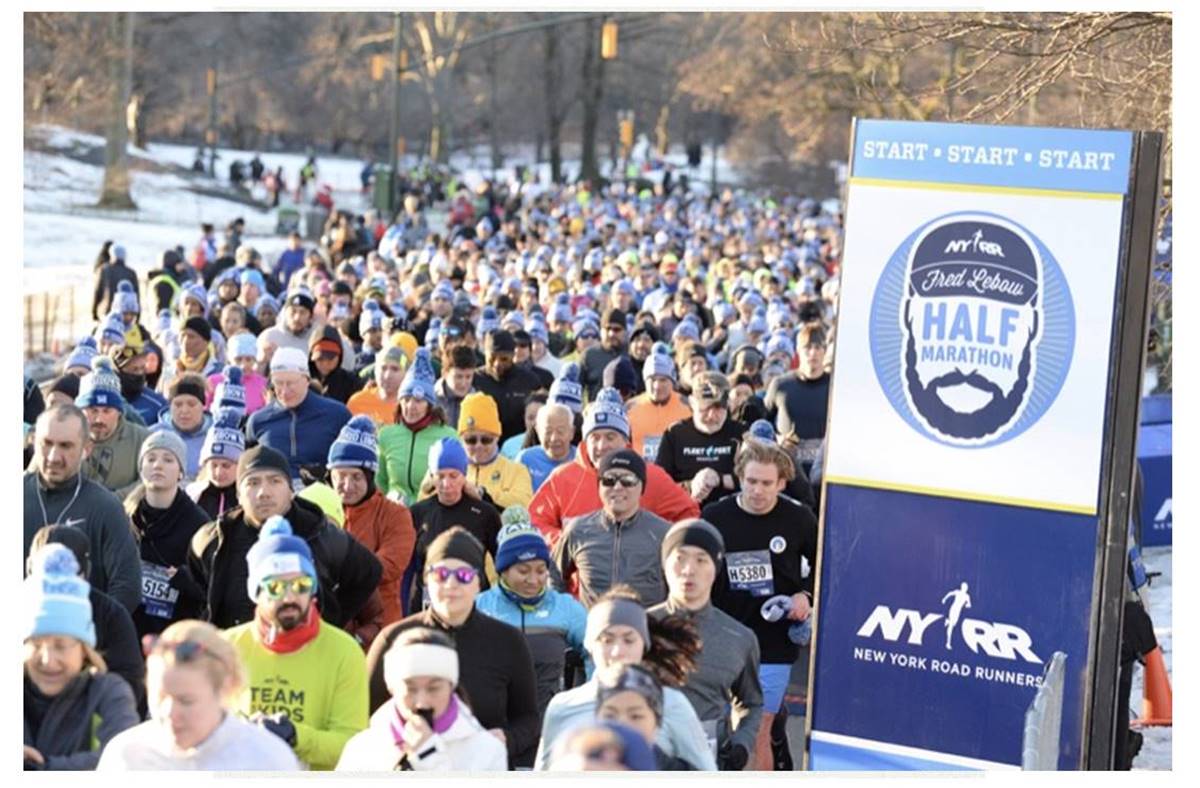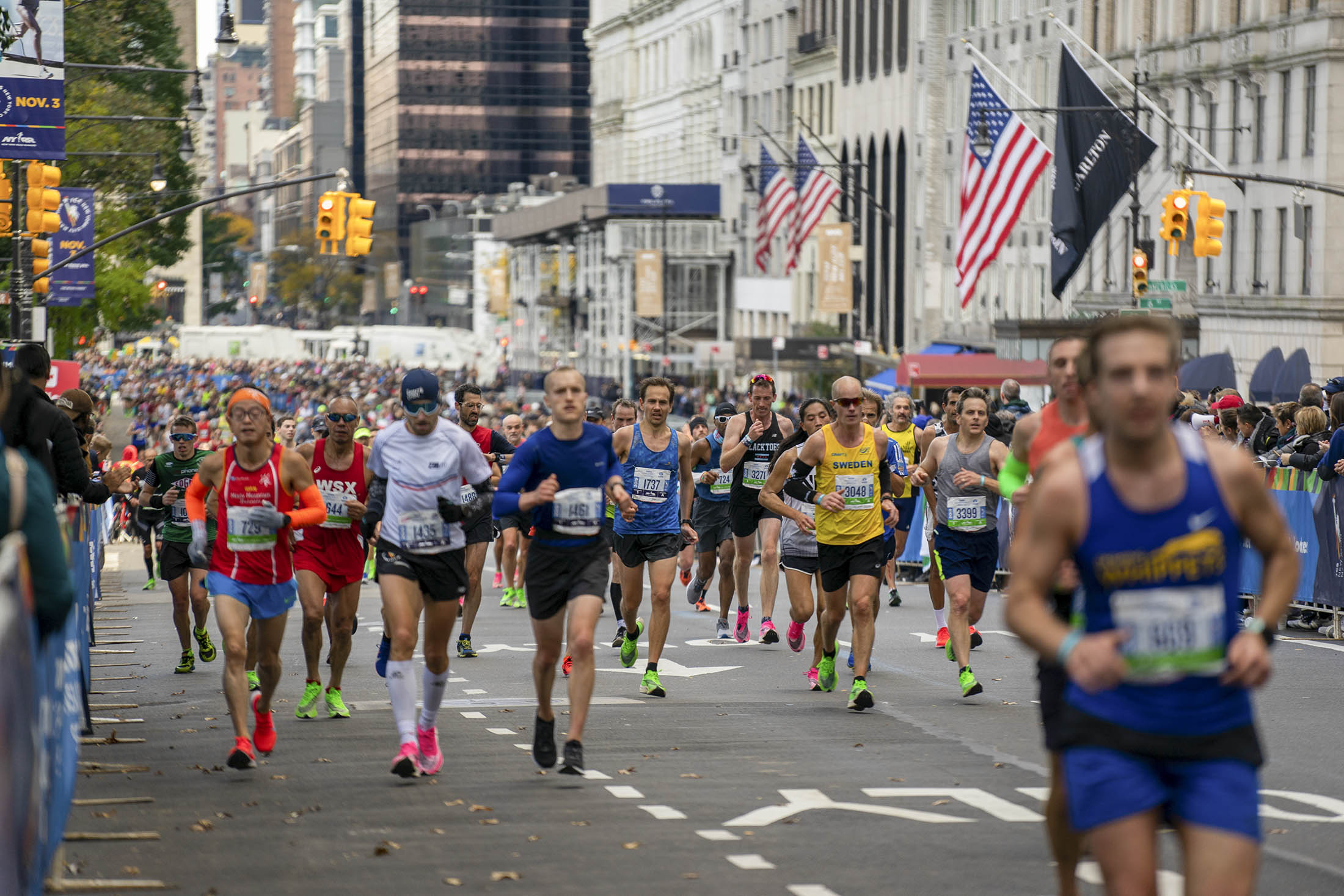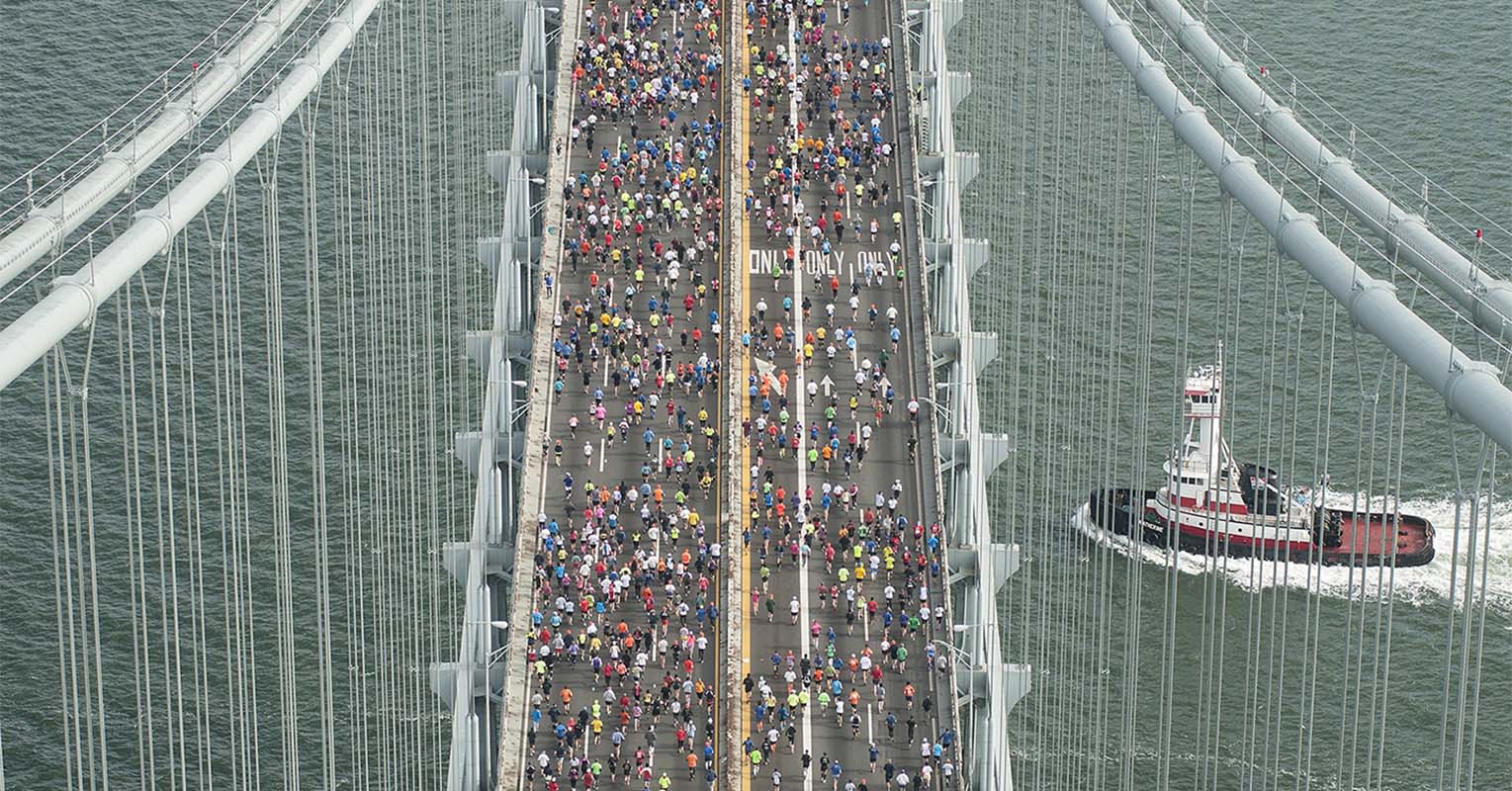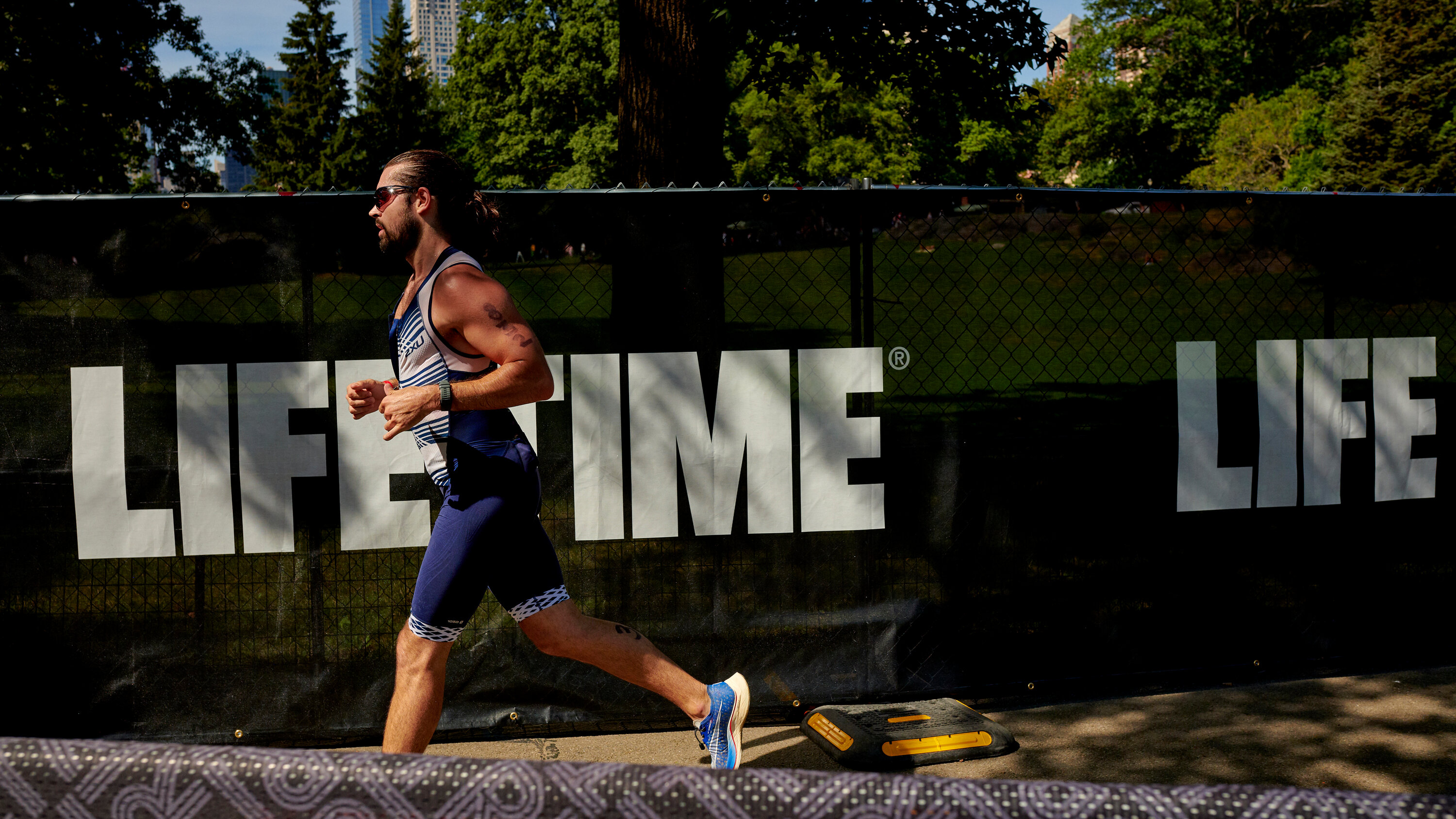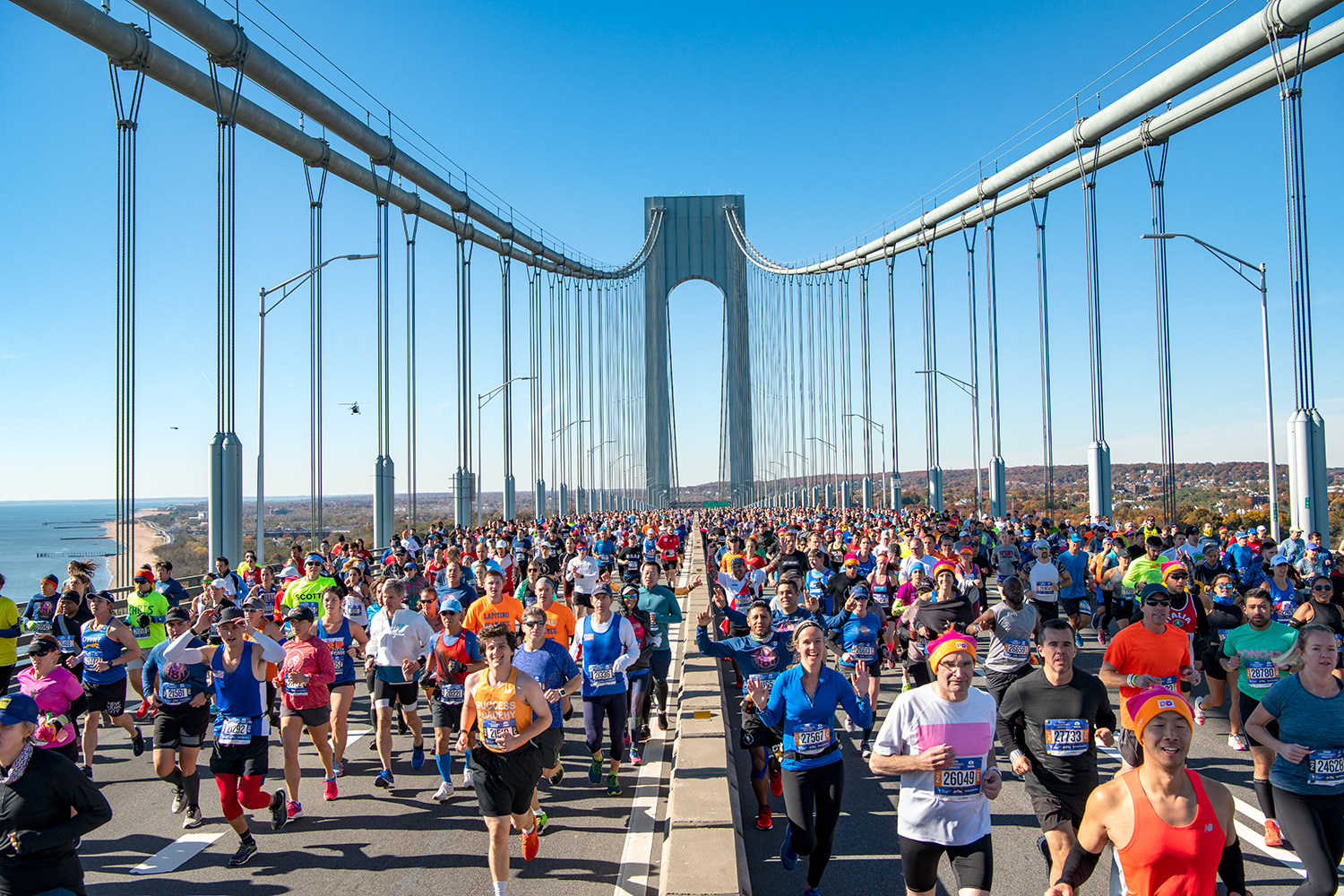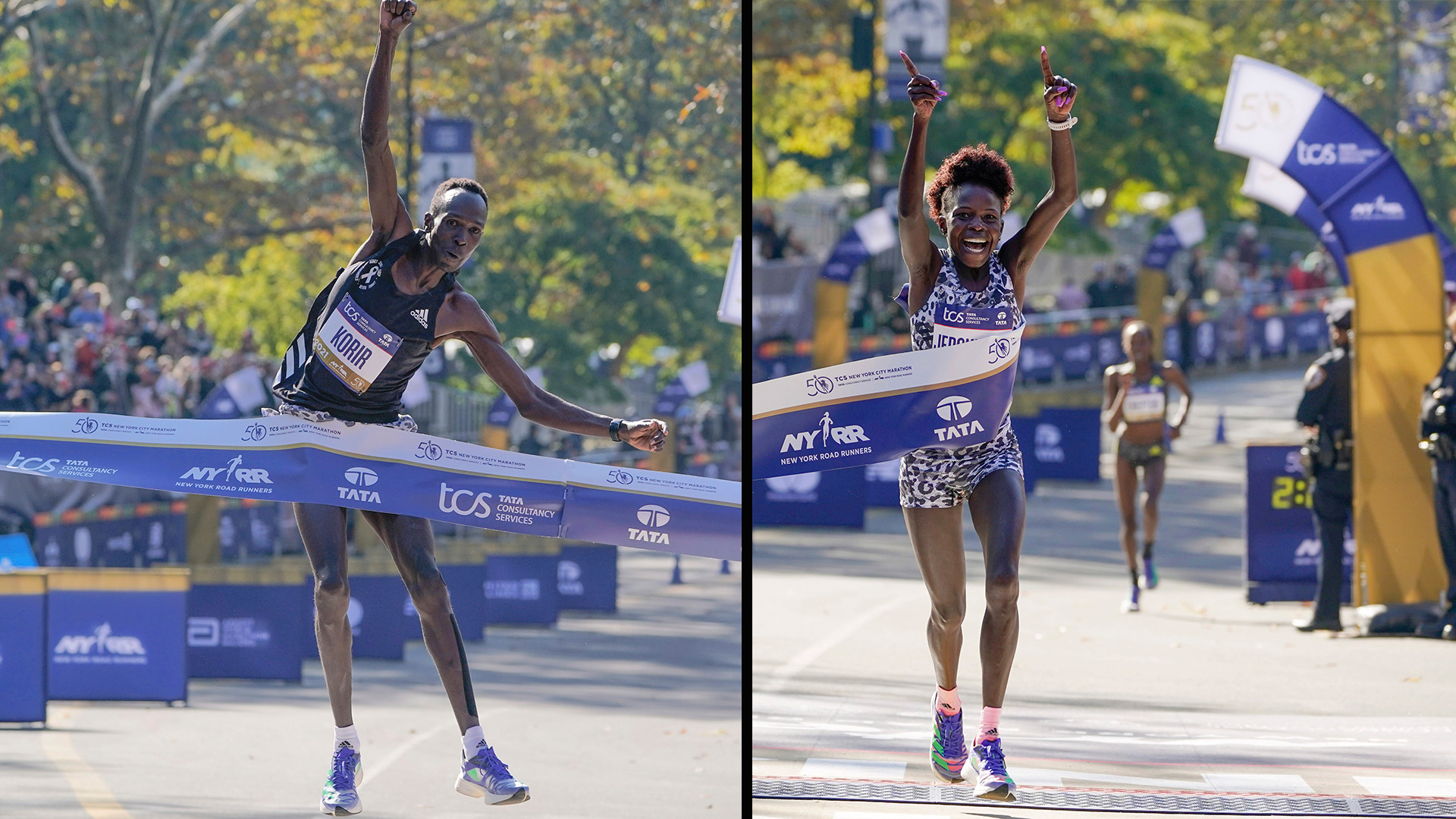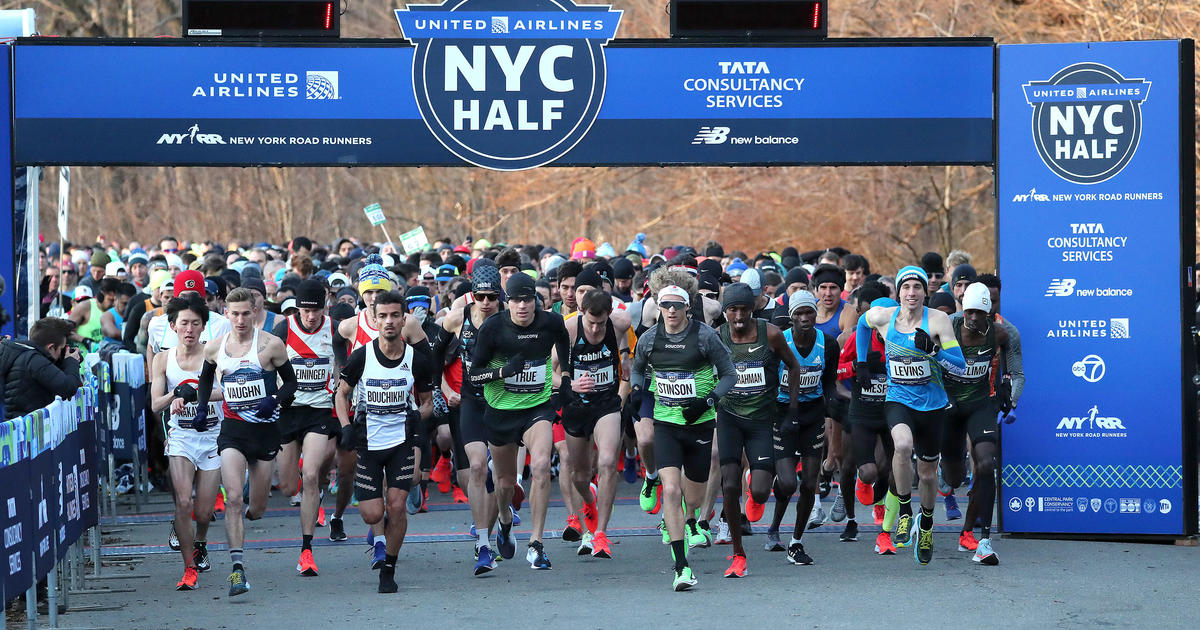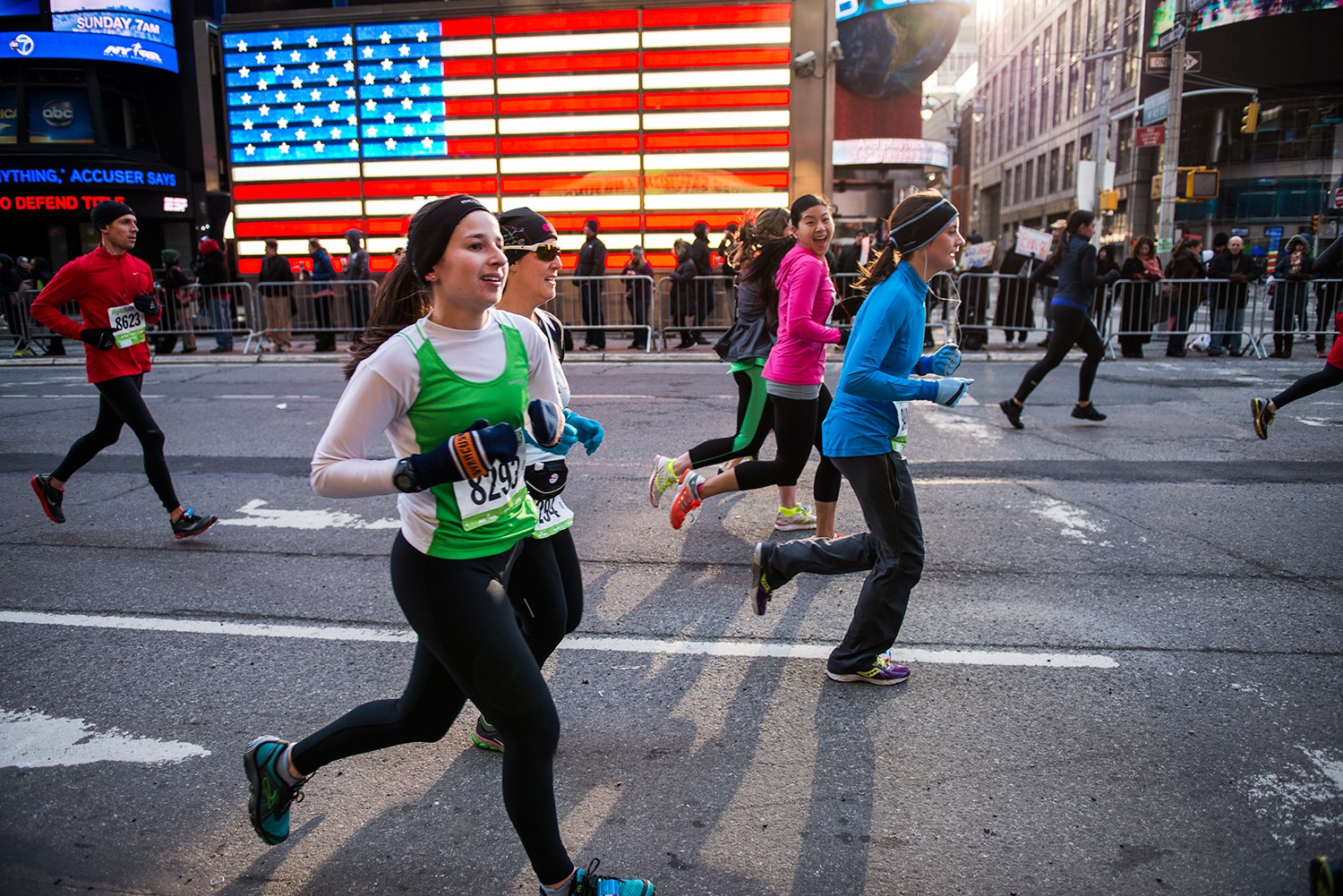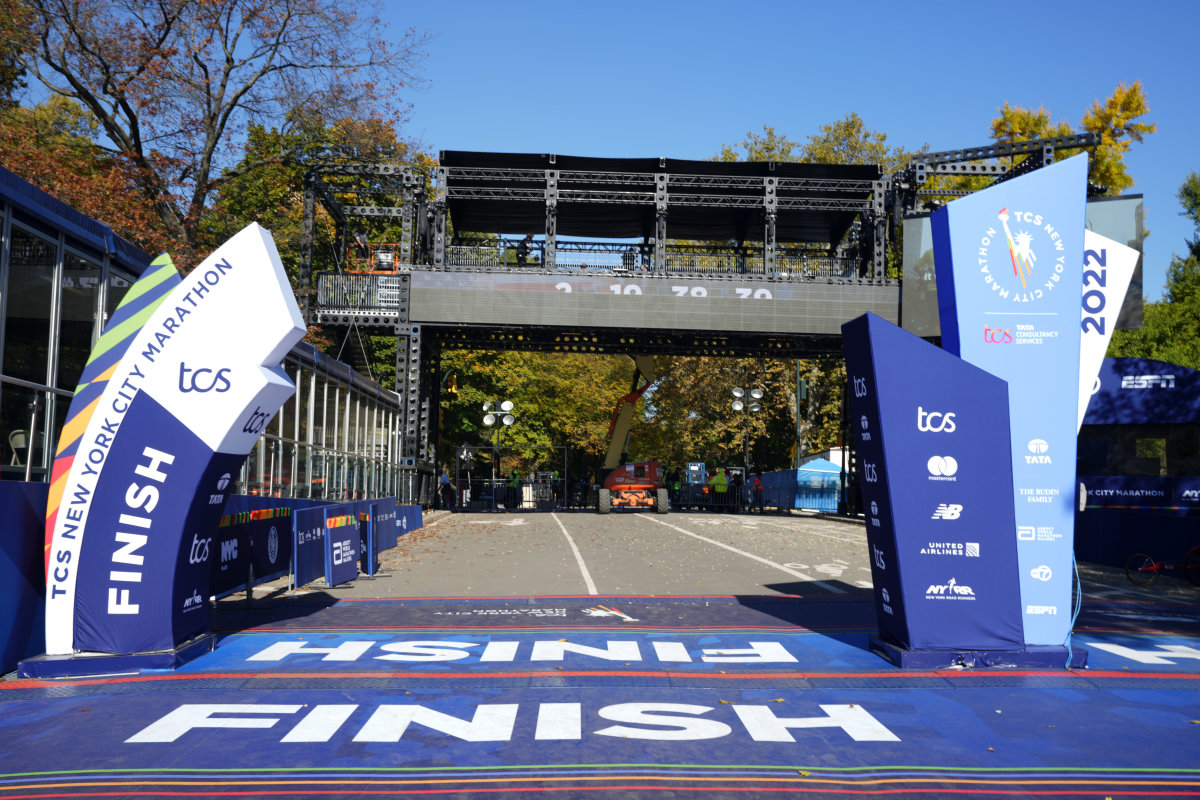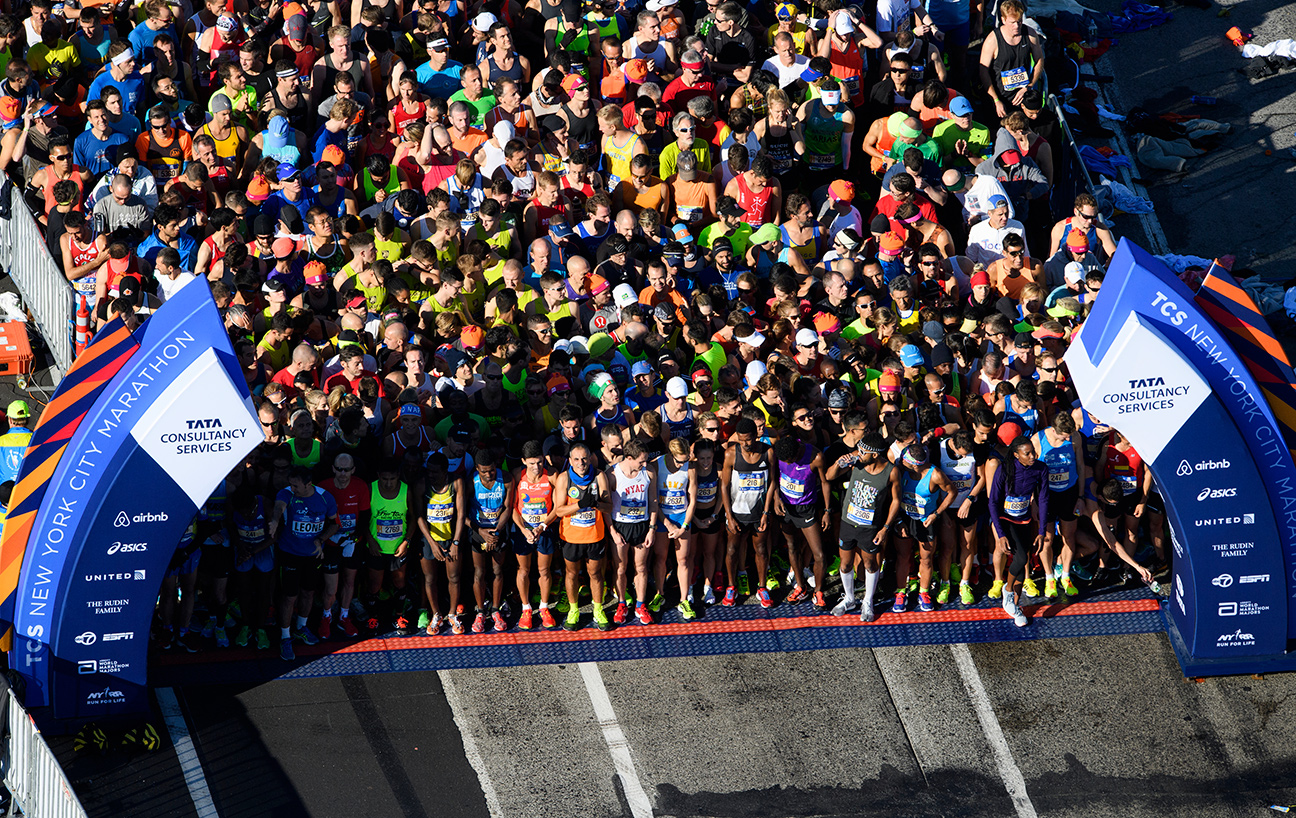

Featured
Where Does NYC Marathon Start
Modified: January 2, 2024
Join the iconic NYC Marathon starting in Staten Island and experience the thrill of running through all five boroughs. Don't miss this featured event!
Introduction
Welcome to the exciting world of the New York City Marathon, one of the most iconic and prestigious races in the world. Every year, thousands of runners from all corners of the globe gather in the heart of New York City to participate in this epic event. The NYC Marathon is not just a race, but a celebration of human endurance, determination, and the spirit of community.
The history of the NYC Marathon dates back to 1970 when it was first held with a modest group of 127 participants. Since then, it has grown exponentially, attracting elite runners, recreational joggers, and spectators alike. The marathon has become an annual tradition that showcases the diverse neighborhoods, famous landmarks, and vibrant spirit of New York City.
Running a marathon is no easy feat, and the NYC Marathon presents its own unique set of challenges. One aspect that often captures the curiosity of participants and spectators is the starting location of this illustrious race. The starting line is not only the point where runners embark on their journey, but it also sets the tone for the entire race.
In this article, we will delve into the history, route, and significance of the NYC Marathon’s starting location. We will explore the evolution of the starting line over the years and shed light on the current location that has become synonymous with the marathon. So, let’s lace up our running shoes and discover where the NYC Marathon begins its iconic journey.
History of the NYC Marathon
The New York City Marathon has a rich and storied history that spans over five decades. It all began in 1970, when a small group of runners gathered in Central Park to compete in what would become the inaugural race. With only 127 participants, the marathon was a humble event compared to its current scale. However, it quickly gained popularity and grew into a massive spectacle that now attracts over 50,000 runners each year.
Over the years, the NYC Marathon has witnessed numerous milestones and memorable moments. In 1976, the race made history by hosting the first-ever wheelchair division, revolutionizing the sport and providing an inclusive platform for athletes with disabilities. The marathon continued to evolve, introducing new categories such as the professional women’s race in 1984, which offered equal recognition and prize money for women.
One of the most iconic moments in the marathon’s history occurred in 1994 when Fred Lebow, the race’s founder, lit the ceremonial cauldron to start the race just months before his passing. This symbolic act became a lasting tribute to Lebow’s dedication and contribution to the event.
Throughout the years, the NYC Marathon has also witnessed the triumphs and accomplishments of legendary runners. In 2001, the race saw its fastest finish time when the Kenyan runner, Tesfaye Jifar, crossed the finish line in a remarkable two hours, seven minutes, and 43 seconds. This record-breaking performance showcased the extraordinary talent and athleticism of the participants.
Moreover, the marathon has not only served as a platform for personal achievements but has also united people from diverse backgrounds across the globe. It has become a symbol of resilience and determination, particularly in the face of adversity. In 2012, the marathon was canceled due to the devastating impact of Hurricane Sandy on the city. However, the following year, the race returned, sending a powerful message of solidarity and a defiant spirit.
As the NYC Marathon continues to evolve and grow, it remains a testament to the power of human spirit and the pursuit of excellence. With each passing year, new stories are written, records are broken, and personal goals are achieved. The marathon’s rich history serves as a source of inspiration, motivating runners to push beyond their limits and pursue their dreams.
Route and Course of the NYC Marathon
The New York City Marathon boasts a captivating and challenging route that takes runners on a journey through the five boroughs of the city – Staten Island, Brooklyn, Queens, the Bronx, and Manhattan. The race covers a distance of 26.2 miles, showcasing the diversity and vibrancy of each borough along the way.
The course begins on Staten Island, where participants gather at the starting line to kick off their epic quest. From there, the runners traverse the Verrazzano-Narrows Bridge, enjoying stunning panoramic views of the New York Harbor. As they make their way into Brooklyn, the excitement and energy of the race propel them forward in their endeavors.
Brooklyn, the largest borough in New York City, offers a lively atmosphere as crowds of spectators line the streets, cheering on the runners with infectious enthusiasm. The course then takes a turn into Queens, where participants experience the iconic Queensboro Bridge. This landmark, with its majestic arches and breathtaking views of the Manhattan skyline, is a challenging segment of the race, testing the endurance and determination of the runners.
As they emerge from the bridge, the runners enter Manhattan, where they are greeted by countless supporters who fill the streets with cheers, encouraging the athletes to keep pushing forward. The course passes through iconic locations such as First Avenue, where the energy of the crowd is electric, fueling the runners’ spirits as they continue their journey.
Next, the course briefly ventures into the Bronx, offering runners a change of scenery and an opportunity to experience the borough’s unique spirit. The cheers from spectators and the rhythmic beats of cheering bands create an uplifting ambiance that helps propel the participants toward their ultimate goal.
Finally, the course brings the athletes back into Manhattan, where they enter Central Park, the final stretch of the race. Here, the runners are surrounded by the lush greenery and tranquil ambiance of the park, providing a welcome respite from the bustling city streets. As they make their way through the park, the finish line looms ahead, drawing them closer to their triumphant achievement.
The route of the NYC Marathon is not just a physical challenge, but also an emotional and mental journey. It encapsulates the spirit of the city, with its diverse neighborhoods and iconic landmarks, serving as a powerful backdrop for this incredible race.
Starting Location of the NYC Marathon
The starting location of the New York City Marathon has seen a significant evolution since its inception. The organizers have carefully selected various sites over the years to accommodate the growing number of participants and ensure the smooth execution of the race.
In its early years, the marathon primarily began within the confines of Central Park. The park’s iconic landscapes and winding paths provided a scenic and intimate setting for the runners to commence their marathon journey. However, as the popularity of the race soared, it became evident that a larger and more accessible starting location was necessary.
As a result, the marathon’s starting line was moved to the Verrazzano-Narrows Bridge in 1976, a change that would forever alter the race’s dynamics. This iconic suspension bridge, connecting Staten Island to Brooklyn, offered ample space and impressive views of the New York Harbor. The move to the Verrazzano-Narrows Bridge not only provided a more spacious starting location but also added an exhilarating element to the race as the runners crossed the span high above the water.
While the bridge provided a spectacular backdrop, logistical challenges prompted another change in the starting location in 2011. The organizers decided to make Staten Island’s Fort Wadsworth the new starting point of the New York City Marathon. This site offered ample space and improved accessibility for both runners and spectators.
Fort Wadsworth provides a sprawling setting for participants to gather and prepare for their arduous journey. It allows for efficient staging of the different waves and corrals, ensuring a smooth and organized start to the race. The area surrounding Fort Wadsworth also provides ample room for support services, such as medical tents and gear check areas, which contribute to the overall efficiency of the event.
With Staten Island as the current starting location, runners have the opportunity to soak in the stunning views of the Verrazzano-Narrows Bridge, as well as the picturesque surroundings of Fort Wadsworth. It sets the stage for an auspicious start, igniting the excitement and anticipation that fuels the participants as they embark on their marathon journey through the five boroughs of New York City.
The starting location of the NYC Marathon holds a special significance for both runners and spectators alike. It embodies the spirit of the race – a celebration of human perseverance and the unity of a diverse community of athletes coming together to conquer a remarkable challenge.
Previous Starting Locations
The New York City Marathon has seen a few different starting locations throughout its illustrious history. These previous starting locations hold a sense of nostalgia and reflect the evolution of the race over time.
Prior to the race’s move to the Verrazzano-Narrows Bridge in 1976, the marathon predominantly began within Central Park. The park’s lush greenery and tranquil setting provided an intimate and familiar starting point for the runners. The race would kick off among the towering trees and winding paths, setting the tone for the journey ahead.
The move to the Verrazzano-Narrows Bridge brought about a dramatic change in the starting location. This iconic suspension bridge, spanning the gap between Staten Island and Brooklyn, allowed for a grander and more visually stunning beginning to the race. Runners would gather on the upper level of the bridge, taking in breathtaking views of the New York Harbor before embarking on their marathon quest.
While the Verrazzano-Narrows Bridge became the defining starting location for many years, logistical challenges would prompt further shifts. In 2011, the marathon’s starting line was relocated to Fort Wadsworth, a historic site in Staten Island. This change allowed for improved organization and accessibility, providing a more efficient and enjoyable experience for both runners and spectators.
Interestingly, the race also experimented with a unique starting location in 1994. As a tribute to the original 1970 race that started in Central Park, a group of runners assembled in Central Park once again to retrace the marathon’s early roots. This special gathering served as a reminder of the race’s humble beginnings and offered a nostalgic nod to the past.
Looking back at the previous starting locations of the NYC Marathon, it is evident that each transition has been driven by the goal of enhancing the race experience. From the intimate setting of Central Park to the grandeur of the Verrazzano-Narrows Bridge, and finally to the practicality and accessibility of Fort Wadsworth, each location has played a significant role in shaping the race’s character.
While the current starting location embodies the essence of the NYC Marathon, the previous starting locations hold a special place in the hearts of those who have participated in or witnessed the race. They serve as nostalgic reminders of the marathon’s history, showcasing the innovation and adaptability of the organizers in creating a world-renowned event.
Current Starting Location
The current starting location of the New York City Marathon is Fort Wadsworth in Staten Island. This spacious and scenic site has been the official starting point of the race since 2011, offering a perfect launching pad for the thousands of runners participating in the marathon.
Fort Wadsworth provides ample space for the organization and staging of the race. Runners gather at the designated starting area, divided into different waves and corrals based on their assigned start times or qualifying times. The layout of Fort Wadsworth allows for a smooth and efficient start to the race, reducing congestion and ensuring a seamless transition for participants.
The starting area at Fort Wadsworth also offers numerous amenities to aid the runners in their preparation. Medical tents are strategically placed to provide immediate care in case of any medical emergencies, while gear check areas allow runners to deposit their belongings securely. These facilities contribute to the overall comfort and convenience of the participants, helping them to focus on the task ahead.
Moreover, the location of Fort Wadsworth provides an enchanting backdrop for the start of the marathon. Situated on the northeastern tip of Staten Island, it offers stunning views of the Verrazzano-Narrows Bridge, the iconic landmark that runners will conquer as they commence their journey. The sight of the bridge stretching across the water fills the runners with a mix of excitement and anticipation, setting the stage for the challenging yet invigorating race ahead.
Fort Wadsworth is not only significant for runners but also for the spectators who come to support and cheer them on. The location allows friends, family, and fans to gather and witness the start of the marathon, creating an electric atmosphere as the participants take their first strides. The cheers, applause, and encouragement from the crowd provide an emotional boost, fueling the runners’ determination as they embark on their 26.2-mile endeavor.
The current starting location of the New York City Marathon at Fort Wadsworth represents the race’s commitment to providing a smooth and enjoyable experience for all participants. It offers ample space, convenient amenities, and breathtaking views, creating an ideal platform for the runners to begin their marathon journey. Surrounded by the excitement and support of fellow runners and spectators, the starting location sets a spirited tone for the race, ensuring that the NYC Marathon remains one of the most iconic and memorable events in the running world.
Significance of the Starting Location
The starting location of the New York City Marathon holds immense significance, not only as the point where the race begins, but also as a symbol of the marathon’s spirit, history, and unity. The carefully selected starting location contributes to the overall experience of the participants and sets the tone for the entire race.
One of the key aspects of the starting location is its practicality. The organizers aim to choose a site that can accommodate the large number of participants and provide sufficient space for efficient organization. It should allow for the staging of different waves and corrals, ensuring a smooth and organized start to the marathon. The starting location should also have the necessary amenities, such as medical facilities and gear check areas, to support the runners’ needs at the beginning of their journey.
Beyond practical considerations, the starting location holds sentimental value as well. The changes in the starting location over the years reflect the evolution of the race and the organizers’ efforts to enhance the marathon experience. Each location has its own unique characteristics and history, contributing to the collective memory and story of the NYC Marathon.
The starting location serves as a focal point for runners and spectators alike, bringing together a diverse community of athletes, supporters, and volunteers. It is a place of anticipation, excitement, and nervous energy, as runners from all walks of life gather to embark on the same challenging journey. The starting line unites individuals with a shared passion for running, creating a sense of camaraderie and encouraging a supportive environment throughout the race.
Moreover, the starting location offers awe-inspiring views and iconic backdrops that add to the overall experience of the participants. Whether it is the stunning vistas of the Verrazzano-Narrows Bridge, the serene landscapes of Central Park, or the vibrant streets of New York City, the starting location immerses the runners in the character and beauty of the surroundings, creating a memorable and captivating beginning to the marathon.
The starting location of the New York City Marathon also holds historical significance. It serves as a connection to the race’s past, paying homage to the founders, participants, and landmarks that have shaped its legacy. By retracing the footsteps of those who have come before, the starting location becomes a symbol of continuity and tradition, honoring the enduring spirit and values of the marathon.
In essence, the starting location of the NYC Marathon is not merely a point on a map, but a significant and integral part of the race’s fabric. It represents unity, community, history, and adventure, setting the stage for an unforgettable experience for all involved. As runners gather, anticipation rises, and a collective determination takes hold, the starting location marks the beginning of a remarkable journey that transcends physical boundaries and embodies the transformative power of the New York City Marathon.
Conclusion
The New York City Marathon is more than just a race; it is a testament to the indomitable human spirit and the power of collective achievement. From its humble beginnings in Central Park to its grand starting location at Fort Wadsworth, the marathon has evolved into an iconic event that captivates participants and spectators alike.
The history of the NYC Marathon showcases its growth and adaptability. As the race expanded, the starting location shifted, optimizing space and logistics while maintaining the race’s integrity. Whether it was the intimate setting of Central Park or the awe-inspiring views from the Verrazzano-Narrows Bridge, each starting location has left its imprint on the marathon’s legacy.
The current starting location at Fort Wadsworth in Staten Island serves as a testament to the race’s commitment to providing the best experience for participants and spectators. It offers ample space, practical amenities, and breathtaking views that inspire runners as they embark on their marathon journey.
Moreover, the significance of the starting location reaches beyond practical considerations. It symbolizes unity and inclusivity, bringing together a diverse community of runners from around the world. The starting line represents a shared passion for running and a collective pursuit of personal excellence.
As the starting location has changed over time, it has also upheld the marathon’s rich history and traditions. Each starting point holds sentimental value, connecting runners to the legacy of those who have come before them and honoring the spirit of the NYC Marathon.
In conclusion, the starting location of the New York City Marathon is a crucial element that sets the stage for the race’s epic journey. It encapsulates the excitement, community, and remarkable spirit of the marathon. As runners gather at the starting line, the anticipation and energy are palpable, fueling their determination to conquer the challenging yet rewarding 26.2-mile course through the vibrant streets of the five boroughs of New York City.
The starting location is where dreams become reality, personal limits are shattered, and the magic of the NYC Marathon truly comes to life. It represents the resilience, unity, and triumph of the human spirit, making the race an enduring symbol of inspiration and achievement for runners and spectators alike.
